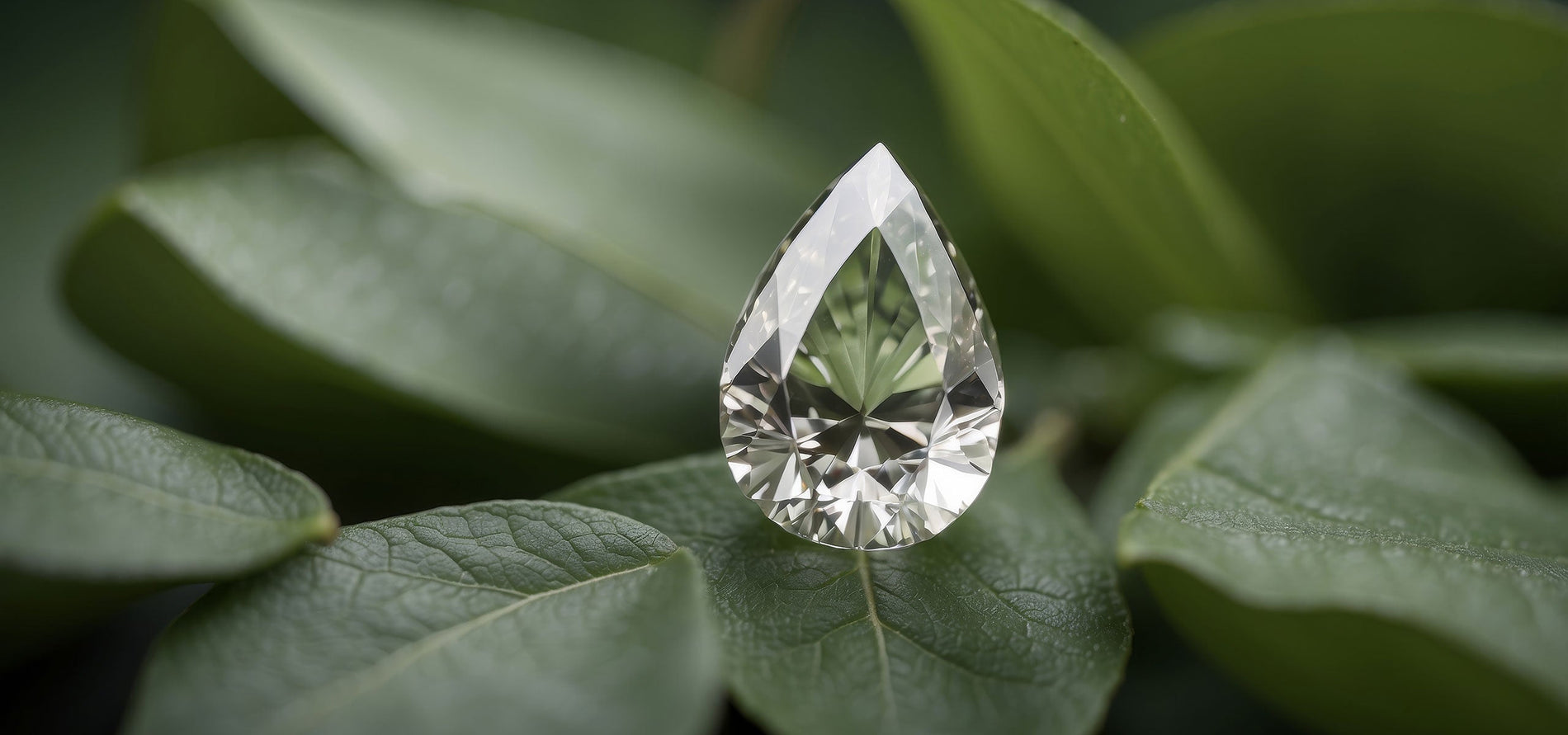The diamond industry stands at a crossroads, grappling with its legacy of environmental destruction and human rights controversies while confronting a rapidly evolving market shaped by technological innovation. Lab-grown diamonds, once dismissed as synthetic curiosities, now challenge the dominance of mined diamonds by offering a compelling alternative rooted in sustainability and ethics. This shift reflects broader societal demands for transparency and responsibility, forcing consumers and industry stakeholders to reevaluate what constitutes value in these timeless gemstones.
Environmental Impact: Preserving Ecosystems Through Innovation
Resource Extraction and Land Use
Traditional diamond mining is among the most resource-intensive industries, requiring the displacement of 1,750 tons of earth to produce a single carat of gem-quality diamond. Open-pit operations like Botswana’s Orapa Mine — spanning 1.18 square kilometers and 350 meters deep — irreversibly alter landscapes, displacing wildlife and disrupting hydrological systems. In contrast, lab-grown diamonds require no excavation, eliminating habitat destruction and preserving biodiversity. Advanced production facilities occupy modest industrial spaces, with a single 10,000-square-foot lab capable of producing thousands of carats monthly.
The water footprint starkly illustrates this divide: mined diamonds consume 3,900 liters per carat, primarily for ore processing and dust suppression, while lab-grown alternatives use 85% less water through closed-loop cooling systems. Marine diamond mining exacerbates coastal erosion, as seen off Namibia’s skeleton coast, where sediment plumes from underwater dredging smother coral reefs. Lab production avoids these impacts entirely, though critics note its reliance on ultrapure water for reactor chambers — a challenge increasingly mitigated by water recycling technologies.
Carbon Emissions and Energy Use
Fossil fuel dependence plagues both sectors but disproportionately affects mining operations. Heavy machinery, processing plants, and long-haul transportation give mined diamonds a carbon footprint of 108.5 kg CO2 per carat — equivalent to driving 450 km in a gasoline-powered car. Lab-grown diamonds emit 4.8 kg CO2 per carat when using renewable energy, a 95% reduction. However, facilities reliant on coal-powered grids in China and India diminish these gains, emitting up to 40 kg CO2 per carat — still markedly lower than mining.
Innovators like Skydiamond and Aether Diamonds now achieve carbon negativity by sourcing atmospheric CO2 for diamond synthesis and using solar/wind energy. Their patented methods sequester 20 kg of CO2 per carat, contrasting sharply with Rio Tinto’s Argyle Mine, which emitted 43,000 tons of CO2 annually before its 2020 closure.
Toxic Byproducts and Pollution
Mercury and cyanide contamination from artisanal mining poisons 15 million workers globally, releasing 400 metric tons of mercury annually into ecosystems. The 2015 Animas River disaster — where 3 million gallons of mining sludge contaminated four U.S. states — highlights the risks even in regulated contexts. Conversely, lab diamond waste consists primarily of graphite and inert metal catalysts, 98% of which get recycled into industrial abrasives and battery components.
Economic Implications: Reshaping Markets and Accessibility
Production Costs and Consumer Pricing
Lab-grown diamonds’ price advantage stems from streamlined supply chains and technological advances. While a 1-carat mined diamond averages $6,000, its lab-grown counterpart costs $900 — an 85% reduction. This democratization expands access: millennials and Gen Z buyers now purchase 2.3-carat center stones at prices equivalent to 0.5-carat mined diamonds.
Production economics explain this disparity. Mined diamonds require $220/ton ore processing costs, whereas lab reactors synthesize gems for $40/carat using chemical vapor deposition (CVD). De Beers’ Lightbox subsidiary sells 2-carat lab diamonds for $1,600 — underscoring the sector’s deflationary trajectory as production scales.
Market Dynamics and Employment
The lab-grown sector’s 22.4% annual growth threatens mining-dependent economies. Botswana, where diamonds constitute 60% of export earnings, faces revenue declines as lab alternatives capture 18% of the U.S. engagement market. However, new opportunities emerge: India’s Surat district, traditionally a cutting hub, now hosts 300 CVD labs employing 35,000 technicians — a 400% job increase since 2020.
Long-Term Viability and Innovation
Mined diamond reserves face depletion, with major deposits like Russia’s Mir Mine nearing exhaustion by 2030. Lab production scales infinitely — Washington’s IIa Technologies grows 300,000 carats monthly — ensuring stable pricing as demand grows. Blockchain tracking, pioneered by Brilliant Earth, enhances consumer trust, with 78% of buyers preferring lab diamonds’ traceability over mined stones’ murky provenance.
Social Consequences: Ethics in the Supply Chain
Human Rights and Labor Conditions
The mined diamond industry’s darkest legacy persists in conflict zones. Despite the Kimberley Process, 18% of Central African Republic diamonds still fund militias, while Zimbabwe’s Marange fields employ 10,000 children in hazardous conditions. Lab facilities aren’t immune — Human Rights Watch notes 12-hour shifts in some Indian labs — but audits by SCS Global certify 92% meet ISO 45001 safety standards.
Indigenous rights remain contentious. Canada’s Gahcho Kué Mine displaced Dene First Nation communities despite revenue-sharing pledges, whereas lab companies like VRAI partner with Greenland’s Inuit to convert abandoned mines into renewable energy sites.
Community Development and Equity
Mining firms tout social investments — De Beers’ $130 million Botswana hospitals — but these often prioritize expatriates over locals. Conversely, Diamond Foundry allocates 5% of revenue to microloans for Indian and Sierra Leonean women, creating 8,000 jobs in textile and agriculture sectors.
Cultural impacts differ starkly: Australia’s Aboriginal groups protest sacred site destruction by Rio Tinto, while New York’s Diamond District adapts as 40% jewelers now offer lab options, preserving craftsmanship traditions.
Consumer Perceptions and Ethical Choices
A 2025 Nielsen study reveals 67% of buyers under 35 view lab diamonds as “more ethical”, driving a 320% surge in “renewable-grown” keyword searches. Luxury brands like Bulgari now integrate lab diamonds into high jewelry lines, emphasizing blockchain-verified origins over romanticized mining narratives.
Conclusion: Charting a Sustainable Future
Lab-grown diamonds represent more than technological marvels — they embody a paradigm shift toward circular economies and ethical consumption. While mined diamonds retain allure for heritage-focused buyers, the environmental calculus is unequivocal: lab production slashes emissions, conserves ecosystems, and eliminates toxic waste. Economically, they democratize luxury while fostering high-tech employment, albeit requiring vigilant labor oversight. Socially, they offer an escape from mining’s colonial legacies, though true equity demands inclusive growth strategies.
As renewable energy and carbon capture technologies mature, lab diamonds may achieve net-positive impacts — repairing atmospheric CO2 while adorning fingers. This transformative potential positions them not as mined diamonds’ rivals, but as vanguards of a reimagined jewelry industry where beauty and responsibility shine equally bright.



